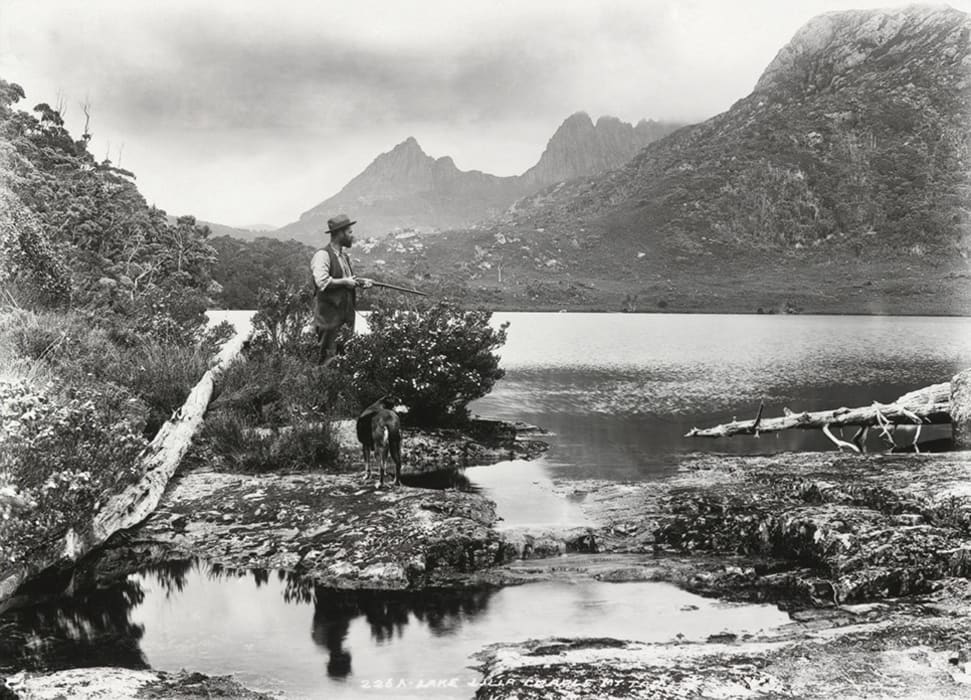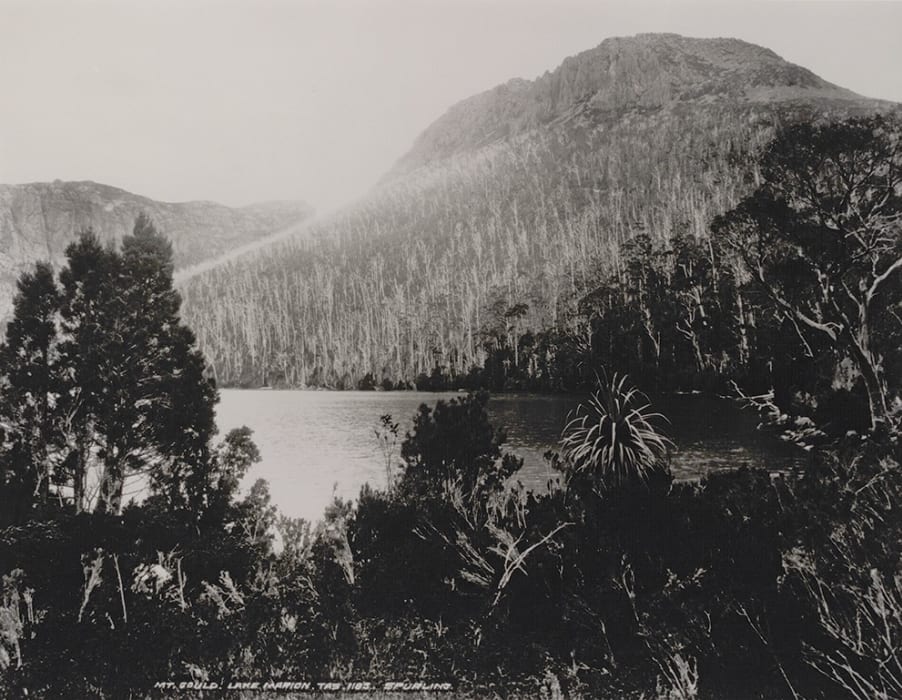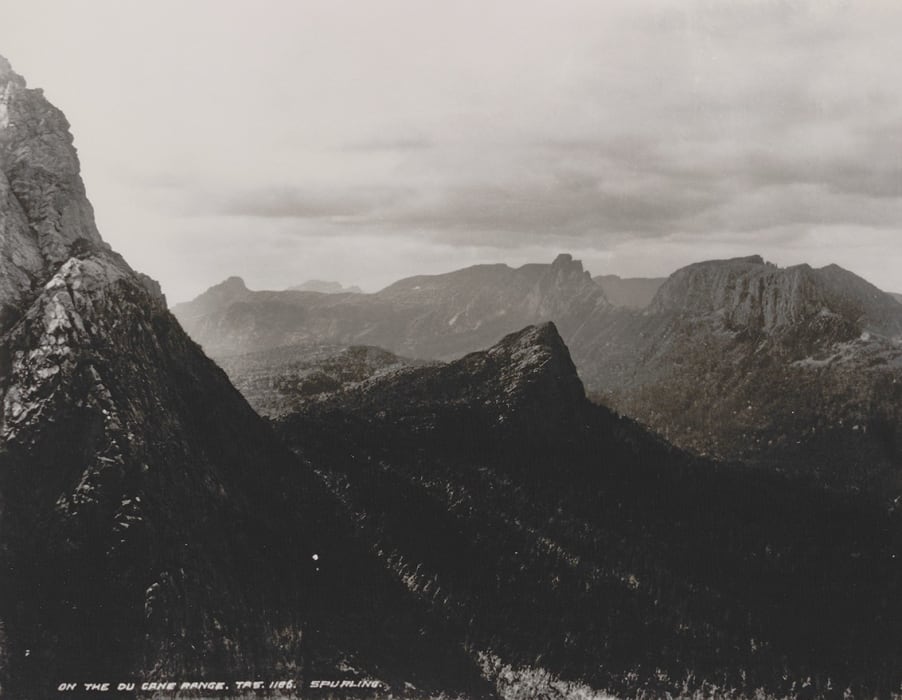photographer STEPHEN SPURLING III
The legacy of pioneering Tasmanian photographer Stephen Spurling III is as unprecedented as it is unrecognised. A couple of generations before the likes of Olegas Truchanas and Peter Dombrovskis brought the state's wilderness to the public's attention, Spurling was embarking on monumental expeditions and braving all kinds of hardship to capture images that remain some of the earliest on record for many destinations.
Spurling took the first aerial pictures of Launceston just 16 years after the Wright brothers' first flight. It was his hard-earned photographs that inspired Gustav Weindorfer to explore Cradle Mountain and ultimately establish the region as "a national park for the people for all time" and which, many years after his death, would be used in conservation campaigns to help preserve the state he loved.
Spurling and his companions were also responsible for naming many locations familiar to modern-day followers, including Dove Lake, Crater Lake, Hartnett Falls and Lake Lilla (after his youngest sister).
They braved starvation, dehydration and exposure as they undertook treks through largely unmapped terrain with cumbersome and rudimentary camping equipment. Frequently they carried upwards of 30 kilograms and relied on food caught along the way in preference to compromising on photographic gear.
The result is a catalogue of hugely significant images stored in libraries, museums and galleries from Launceston and Hobart to Ottawa and New York.
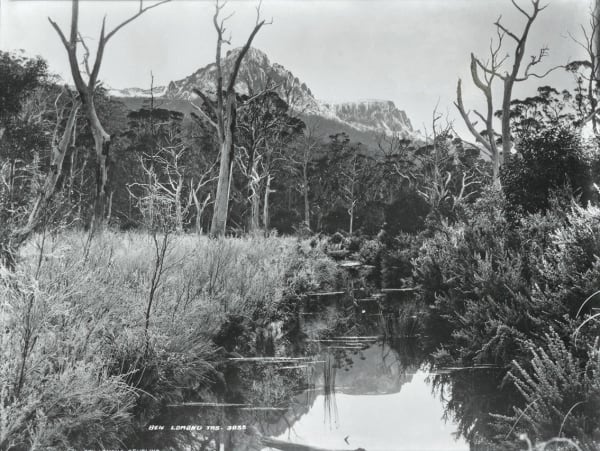
And yet while the likes of Truchanas and Dombrovskis became household names in the field, Spurling's images from "regions largely regarded as being beyond civilisation" threatened to fade into obscurity. Even the mountain named after him in 1974 was only done so two decades after the Tasmanian Nomenclature Board chose to rename Lake Spurling as Lake Riengeena.
So his granddaughter decided to do something about it.
After the 2010 publication of her PhD thesis, The Spurling Legacy and the emergence of wilderness photography in Tasmania, Tasmanian-born researcher and writer Christine Burgess set about gathering his most significant work.
The resulting book, Photographs by Spurlings: A Treasure Trove of Tasmanian Images ($65, Forty South Publishing), tells the story not only of Spurling, but also his photographs. It is a stunning account which any lover of the Tasmanian wilderness will enjoy.
Born in Launceston in 1876, Stephen Spurling packed considerable adventure into his 86 years, including 20 wilderness expeditions, four of which are detailed in the book.
A third-generation photographer with the same name, he veered away from specialising in portraiture like his father and grandfather but still chronicled Tasmanian visits by the likes of Lord Kitchener and the Prince of Wales.
"While Steve produced some outstanding studio and press photography, his true love was the Tasmanian wilderness," Dr Burgess says. "He was happiest when out in the bush, enduring the vagaries of weather and inhospitable terrain, lugging his cumbersome camera and fragile glass plates.
"It was a dangerous exercise. If their hunting and trapping proved fruitless, they went hungry. Yet despite these challenges, Steve produced photographs of stunning artistic and technical quality … by far the largest surviving scenic photographic negative collection generated by any early Tasmania studio."
The four expeditions chronicled in the book are phenomenal by today's standards, let alone with the limited resources and information available to these pioneers. While the weather and scenery may have changed little in the century since – and there are fewer thylacine encounters – the access to wilderness locations has improved immeasurably. Just reaching what is now a huge, deluxe Cradle Mountain visitor centre was an epic undertaking involving a train from Launceston to Railton, horse-drawn coach to Wilmot, horseback to Hounslow Heath and hiking from there.
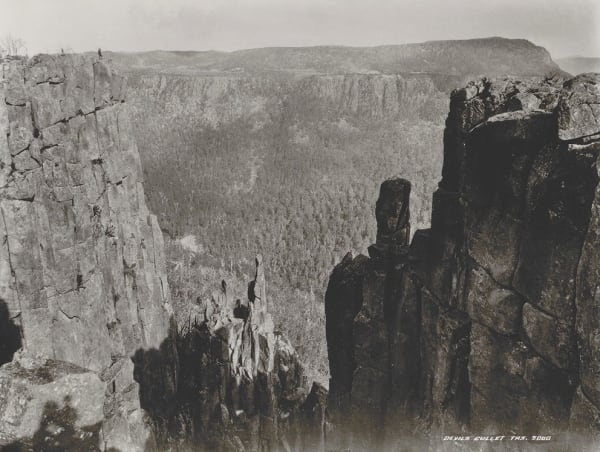
The upper Gordon River and Frenchmans Cap represent two more of the chosen destinations while the logistics of the fourth are nothing short of staggering. Hiking from Deloraine on a south-west compass bearing aiming for Mount Olympus, their 1908 mission was to obtain the first ever photographic record of the region. To complicate matters, they had little idea of their proposed route through a labyrinth of lakes and mountains in an unknown territory referred to as “terra incognita” but soon renamed “terror incognito” by Spurling.
He later wrote that they had been unable to source reliable information and “were not encouraged by rumours of precipitous valleys, impassable bogs, dense belts of scrub and other obstacles”. In what is now largely The Walls of Jerusalem and Cradle Mountain-Lake St Clair national parks, Spurling, Jack Scott and Knyvet Roberts spent 14 days tackling hardships like “the treacherous embrace” of quicksand, “endless lakelets”, “blazing heat” and “gnawing hunger”.
They dined on such delicacies as a two-day dead echidna and witchetty grubs from tree bark, evicted an inquisitive snake from their tent at midnight and “discovered that their decision to take lightweight blankets to conserve weight had been a mistake”.
Spurling's accounts and subsequent analysis suggests their route took them up Higgs Track to Lady Lake and Ironstone Mountain, across Great Pine Tier to Lake St Clair, the Du Cane Range, Mount Olympus, Lake Marion, the Cuvier Valley, Shadow Lake and Cynthia Bay and back via Marlborough, Bronte and Great Lake to Jackeys Marsh. However, as Burgess writes, “The three intrepid bush mates who ventured into this near-impenetrable wilderness in Tasmania's heartland over a century ago achieved their goal. They had brought back the very first images of this extraordinary landscape.”
Spurling's black and white photos have a haunting resonance and absorbing appeal. Frequently, the only human involvement is the appearance of his hiking companions, invariably as tiny figures to demonstrate the vast scale of natural features.
Barney Roberts (son of Knyvet) wrote, “Stephen Spurling is one of Tasmania's forgotten explorers, yet few men, if any, have done more to foster an appreciation and knowledge of Tasmania's rugged and beautiful scenery.”
. . .
Christine Burgess cannot hide an obvious pride at her ancestors' legacy. “For close to a century, three successive Stephen Spurlings recorded the everyday life of the Tasmanian people and their environment,” her conclusion states.
"Stephen III extended his father's fascination with scenic photography and recorded places beyond the reach of the ordinary person. His studio of choice was the Tasmanian wilderness."
Ironically, the Spurlings' actual studio was based at 93 Brisbane Street, Launceston, right next door to where this book can now be bought at Petrarch's Bookshop.
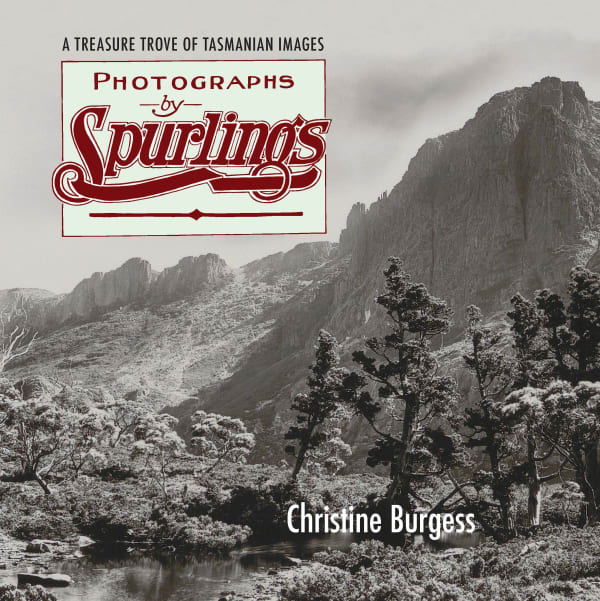
This article first appeared in The Sunday Examiner on June 16, 2024. Forty South would like to thank The Sunday Examiner and Rob Shaw for permission to reprint it.
After 13 years as a journalist in his native England, Rob Shaw moved to Tasmania with his young family in 2002. He has since continued to write about sport, covering two Olympics, three Commonwealth Games and many other major events, while also exploring the Tasmanian wilderness. His book, Shaw Things, is a compilation of some of his best newspaper columns. It was published by Forty South Publishing.

